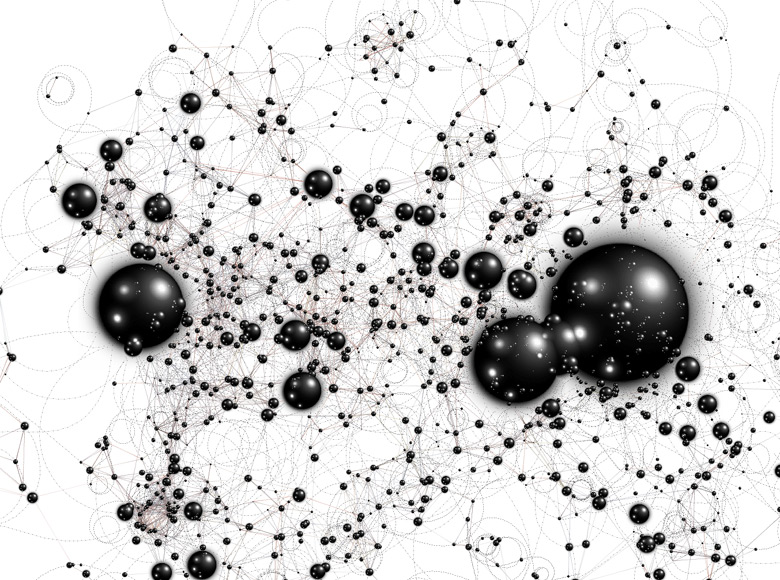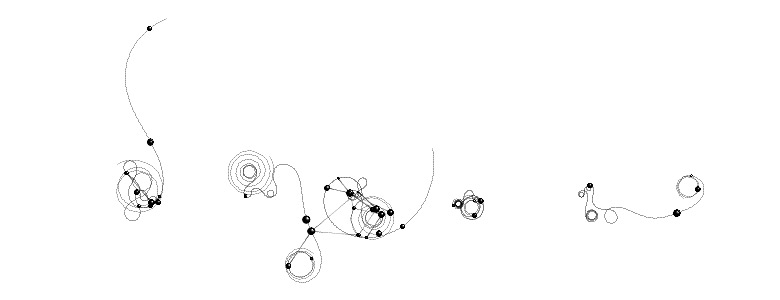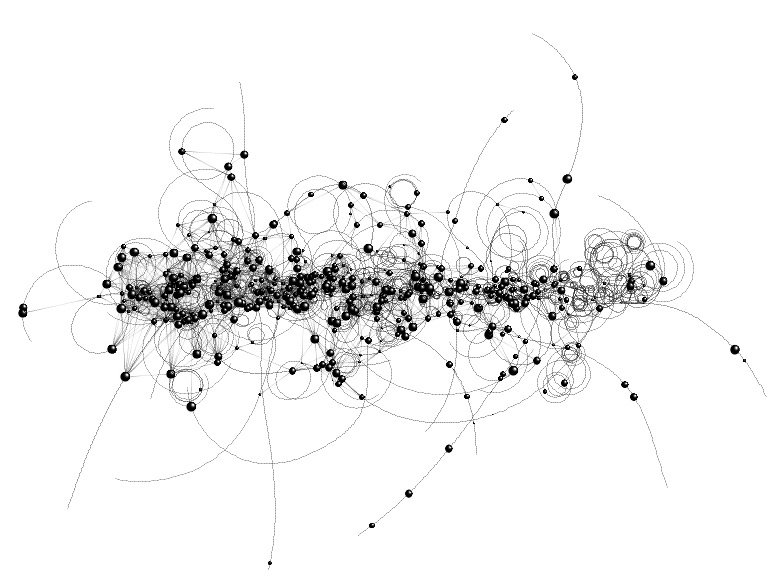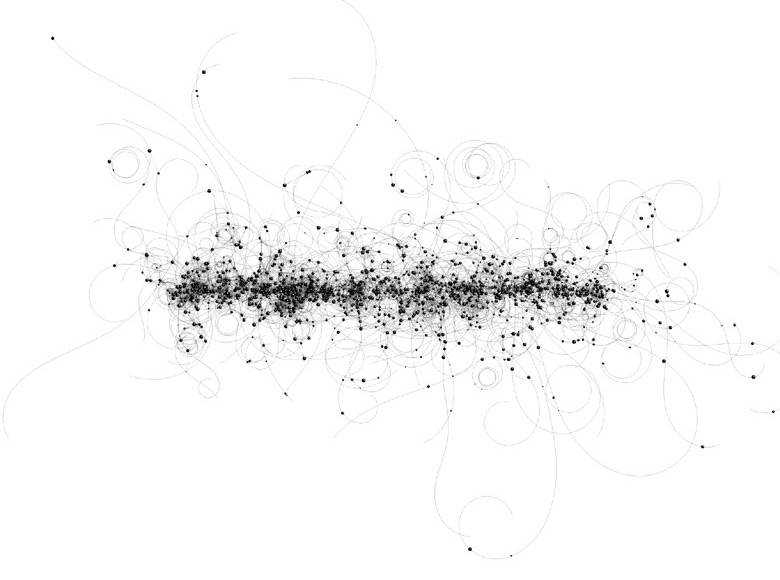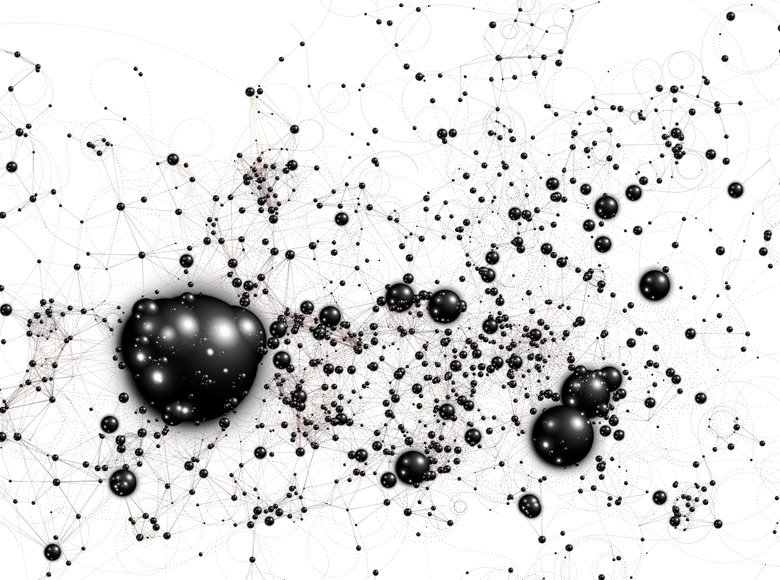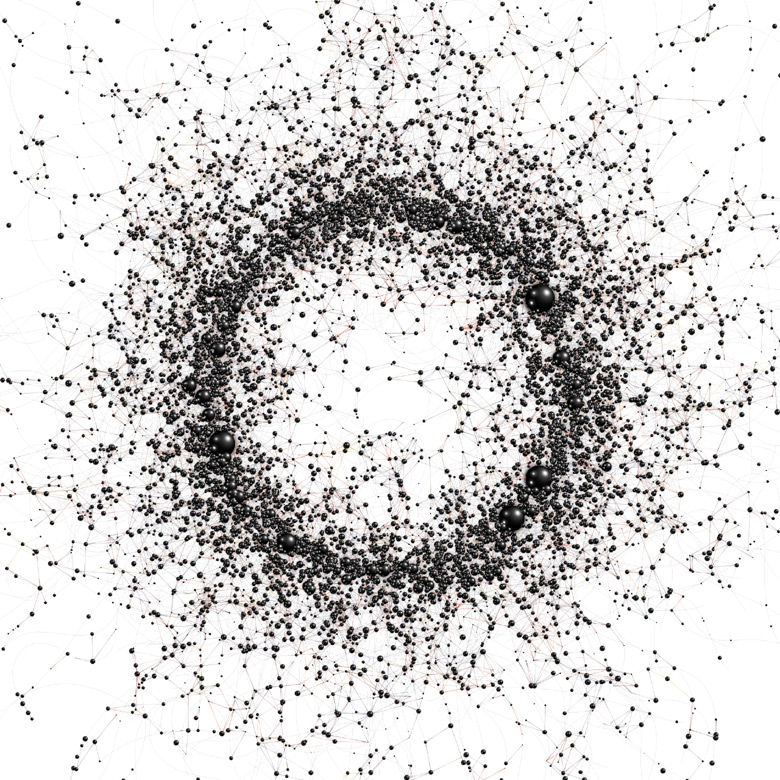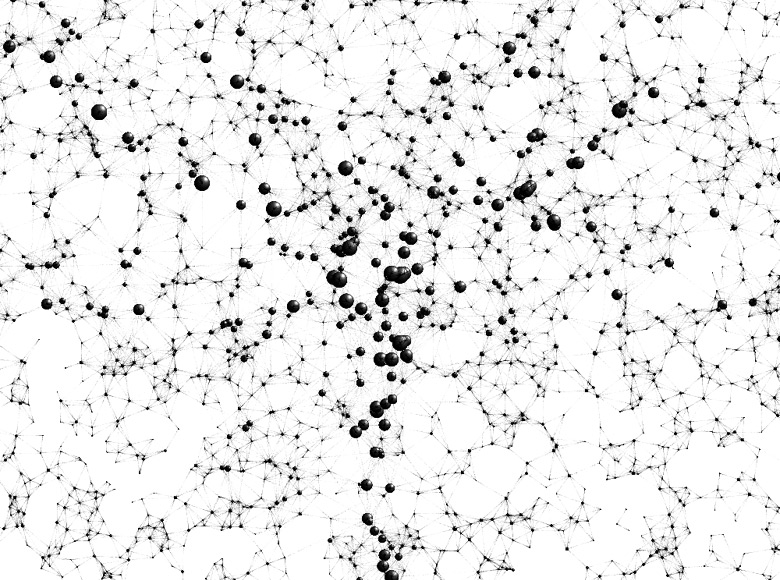The graphic rendering of the node garden is a five step process:
First the substrate paths are drawn (light grey and curvy). Substrate paths instantiate nodes as they grow, but the rendering of the nodes is postponed until all paths have been drawn.
Next the nodes are back painted. Back painting includes a solid black circle for the node itself, plus a bit of dark glow to give the illusion the node is embedded in the surface. This process uses the DARKEST image blending mode of Processing so that the white square of the source image does not overdraw the substrate paths.
Node connections are then drawn as faint lines, darker nearer the endpoints.
Next the nodes are painted black once again. This step is required to erase the connection lines within the node itself. I wanted the node connections to appear to stop at the edge of the node, rather than at its center.
Finally, a specular reflection is painted over each node. No ray tracing is actually occurring, the specular is simply a graphic image pre-drawn by hand. This process uses the LIGHTEST image blending mode of Processing.
|
